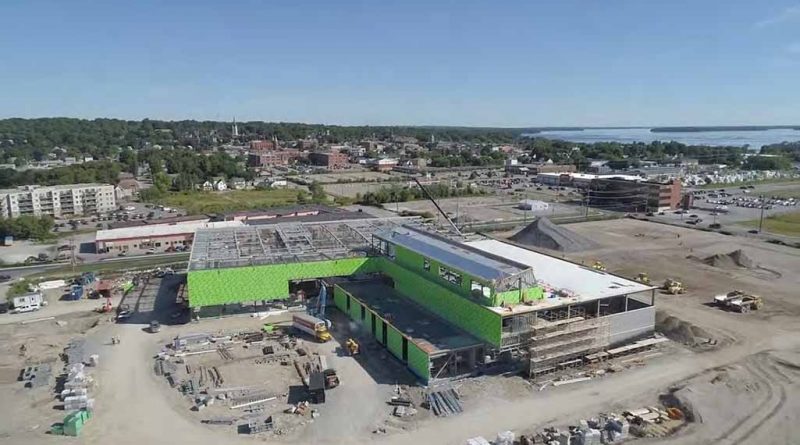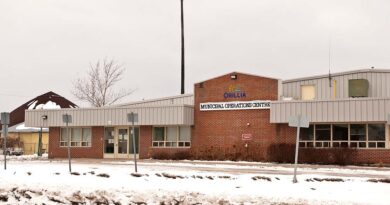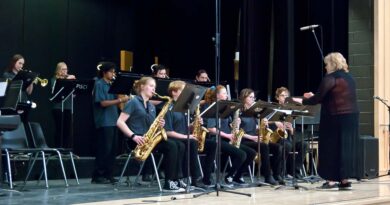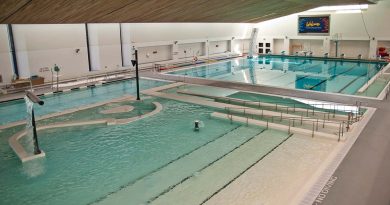Toward Energy Self-Sufficiency
By John Swartz
Orillia was a leader in power generation. We were, through Orillia Water Light and Power, the first community to generate its own electricity. We still do, but times and technology are changing and there are opportunities to add generation capacity.
Between hydro generation, and solar and wind generation, Orillia only relies on the grid for 46% of its electrical needs. Being the foresighted community we think we are, one wonders why it has taken so long for the municipality to insist on requiring solar energy generation for all its buildings, old and new.
For example, the Orillia Recreation Center does not have a solar panel farm on its roof. You’d think it’s a no-brainer to do so. There already are solar panels on the Barnfield Point rec center, Rotary Place, the Nordia building and OPC headquarters. There are many other buildings the City owns that could be support structures for solar panels.
A group of people, lead by Gord Ball, Tyler Hunt, Scott Weiler and David Stinson called Orillia Community Energy (OCE) were at council this week to pitch a solar panel project for the Orillia Recreation Centre’s roof.
“We want us to grow our own power,” said Ball.
They want the City to install enough panels to generate 150 kilowatts of power. This won’t supply the entire electrical needs of the facility, but under the new Ontario net metering system (the Feed In Tariff program ended in 2017), the amount of electricity generated will be deducted from the bill from what is used. There are essentially two systems involved. Power generated on site has to go into the grid and gets metered on the way out and the building’s supply is metered on the way in just like any other place, like your home.
There are a few reasons why more City buildings aren’t equipped with solar panels. Some buildings just aren’t built to hold the extra weight, some have too much shade, but the main reason is the up-front cost. When the province was paying 80 cents per kilowatt the return on investment was pretty quick. With the net metering system, return on investment takes a little longer. Fortunately solar panel costs have dropped, according to the National Energy Board, from $10.71 per watt in 2000 to $.95 in 2013. Construction costs have gone through the roof, so there is a trade off.
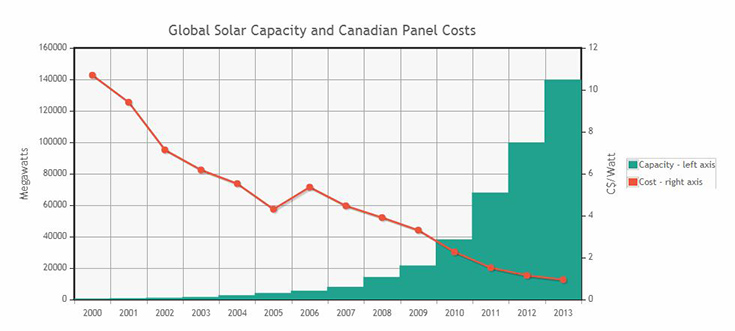
The OCE looked into costs, locations and financing because they believe a local energy solution is the better way to go. Their detailed calculations show a three phase project will cost $301,000 to install. They believe they can raise $210,000 through a combination of solicited donations from individuals and businesses, and grants, with redirected municipal money received from leases paid for the 4 existing solar projects making up the rest.
It will, “contribute energy savings from the rec center installation,” Ball said. “In the first year we assume that would be in the order of $6,000 and then as it’s built out it would eventually save the City, we think, $22,000 in energy savings each year. We’d ask the City, instead of putting that into general revenue to apply it to the reserve fund, as well as rent earned from the City from all current renewable energy projects.”
Ongoing, the City contribution would provide a nest-egg for other projects. Councillor Dave Campbell asked if the intent was just for public buildings or whether private installations could be eligible.
“It may also extend to licensing agreements with private rooftops and people who have roofs but no money, and yet want to engage in this, so it could grow into both public and private buildings,” Ball said of the vision for the project.
Councillor Ted Emond pointed out rents received now are used for building maintenance, which would still have to be funded.
“It’s really just saying you want a grant,” said Emond who also said he supported the project. “I’d rather it be up front that that is what you want to do as opposed you want to sneak in the back door and make it a challenge for us.”
Ball said redirecting current rents into a dedicated renewable energy fund created by council to hold municipal contributions, grants awarded, and donations from others is important.
“This is a critical piece because we want to be able to tell our donors that they are not just giving more money to the City. They are kick-starting a continuing expansion of a local, green energy generation, long-term initiative. Their legacy will be a self-perpetuating renewable energy fund to power more and more local projects,” Ball said.
This is the sustainable aspect of the proposal. Despite the ongoing mismanagement of the province’s electrical system, The OCE and others believe Orillia needs to create and control more of its infrastructure to head off rising costs due to added fees people can’t relate to and costs imposed by climate change.
Ball stressed this would be a City owned and managed project and that the OCE is doing the legwork to get the project underway.
“As Orillia Community Energy we don’t claim anything other than an advisory role and trying to help it happen and to give guidance as we can, but the City is in charge,” said Ball.
Returning to the original thought, why wasn’t a solar panel system part of the rec center project in the first place? It turns out, the roof was designed to accommodate solar panels and the wiring infrastructure is in place, the City just didn’t budget to go the whole mile.
The City’s director of facilities and special projects, Kent Guptil told SUNonine/Orillia it’s conceivable new projects will include solar generation as a starting point.
“If this group gets involved it certainly will,” Guptil said, “I don’t see why it shouldn’t.”
Council adopted a motion to receive the information and to have staff prepare a report on the matter.
(Photos/Images Supplied)

